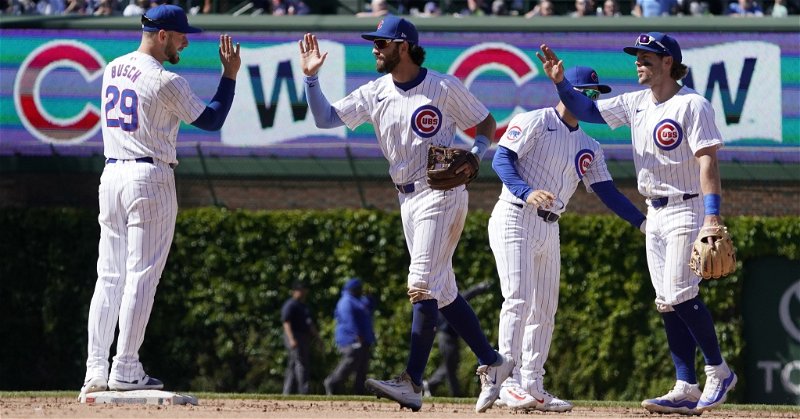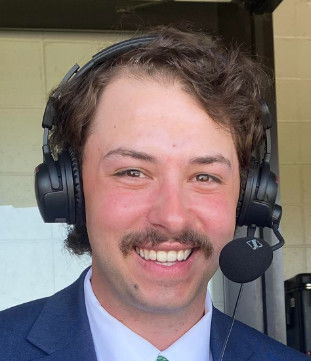
Who should the Cubs trade this offseason? |
In the early stages of the offseason, there has been plenty of discourse about the Cubs’ need for a star in their lineup and their lack of room for said star to play. When Cody Bellinger opted into his contract for the 2025 season, it complicated the Cubs offseason plans. While it plugs the 2023 comeback player of the year into the lineup and the plans for 2025, it gives the Cubs less flexibility to add.
That line of thinking points to one thing: the Cubs need to trade somebody. You might be saying, why? For starters, if the Cubs plan to add a Juan Soto or Pete Alonso type of bat via free agency or a Brent Rooker or Vlad Guerrero Jr. type of bat via trade — the Cubs need to have a place for them to play. Secondly, with 8 top-100 prospects in AAA, including Matt Shaw, who is putting Team USA on his back as of late, the Cubs would love to have the ability to play him in 2025. However, the Cubs have all nine positions and DH under contract for 2025 and beyond as currently constructed, which typically isn’t a problem. Still, it is when that current roster was only good enough to win 83 games in back-to-back seasons. So, who might the Cubs trade? And why? For starters, Ian Happ and Sieya Suzuki are not only under contract, but each player has a no-trade clause. Not to mention, they were the Cubs’ two most productive hitters. Suzuki was a finalist for Silver Slugger in the outfield, while Happ led the Cubs in home runs and RBIs while winning his third straight Gold Glove. Unless something drastically changes, the Cubs will open 2025 with Happ in left field and Suzuki in right field or at DH. What about Nico Hoerner? Hoerner is a name that has seen his name pop up in trade rumors since the trade deadline. At 27 years old, the Cubs believe they have one of the best second basemen in the league. Hoerner provides Gold Glove defense and top speed, as he has stolen over 30 bases in back-to-back seasons. His .273 batting average in 2024 was his worst ever, but it makes sense, considering he battled some injuries. There are only a handful of second basemen in the league that you would no doubt take over Hoerner if given the chance, which makes trading him seem like a bad idea — especially since his value might be lower coming off of a flexor tendon surgery earlier this month. WHY TRADE HIM: With Matt Shaw waiting in the wings and a few teams looking to improve at 2B — perhaps the Cubs would pull the trigger on a trade of Hoerner. WHAT WOULD IT MEAN: Not having Hoerner would likely open second base up for Matt Shaw in 2025. Or, if the Cubs elected to acquire a first baseman, taking Hoerner out of the picture would allow the Cubs to move Michael Busch to 2B if need be. What about Michael Busch? You don’t typically hear of teams with a rookie who hit 21 home runs and almost 3.0 WAR season looking to trade, but that is the type of roster predicament the Cubs are in. Busch hit .248 with 65 RBIs in 2024 and showed signs of Gold Glove-caliber defense at 1st. The Cubs acquired him from the Dodgers ahead of the 2024 season, so I don’t see why the Cubs would be in any hurry to move off of what was one of the Cubs’ best stories in 2024. WHY TRADE HIM: In my opinion, you only trade Busch if you acquire Juan Soto, trade for Vladimir Guerrero Jr. or a player of that caliber. What I mean is this: you would have to block Busch with a player much better than him for the Cubs to move him. Perhaps Busch is a piece IN a Vlad Jr. trade, but it all feels unlikely. But for the sake of explanation, if the Cubs acquire Soto, he would play RF, Suzuki would DH, Bellinger would play 1B, and Busch would be the odd man out if the Cubs decide to keep Hoerner/Paredes. If the Cubs acquire Pete Alonso or Vlad Jr, the new player will play 1B, Bellinger in RF, Suzuki DH, and Busch will be the odd man out if the Cubs decide to keep Hoerner/Paredes. It is important to note that while the Cubs were impressed with his defense at first, they could keep him and let him play 2B and 3B and trade Hoerner or Paredes in a scenario similar to the ones mentioned above.] WHAT WOULD IT MEAN: Michael Busch out of the picture in 2025 would mean the Cubs undergo a roster shake-up of epic proportions. It would also mean that the Cubs value Nico Hoerner and Isaac Paredes more. What about Isaac Paredes? Isaac Paredes will not be a free agent until 2028 and was the big piece the Cubs got back in the trade that sent Christopher Morel and Hunter Bigge to Tampa Bay. Paredes hit 30 home runs in 2023 and drove in 98 runs. He was an All-Star in 2024 before being traded to the Cubs and struggling. Paredes is, in theory, penciled in at third base, but with how he performed in Chicago, that doesn’t feel like a foregone conclusion. WHY TRADE HIM: Simply put, you trade Paredes because you like Nico Hoerner or Michael Busch more. Whether it is the Cubs trying to make room for Matt Shaw to play every day or to free up space for a player of Juan Soto’s caliber or even Pete Alonso or Vlad Jr. — you could move Paredes and allow Busch to play third and Hoerner to stay at 2B or move Hoerner to third and move Busch to 2B. You might be saying, what about Hoerner’s defense at 2B and Busch’s at 1B, ‘I thought the Cubs love their defense’, they do — but both, in theory, could provide as good if not better defense than Paredes at third, as he is far from a Gold Glover. WHAT WOULD IT MEAN: Trading Paredes would mean that the big splash at the 2024 deadline was not worth it. I assume Jed Hoyer has a bit of pride attached to this move. In my opinion, you likely don’t trade the potential of Christopher Morel and Hunter Bigge for three months of Isaac Paredes and then abandon mission. What about Cody Bellinger? Bellinger is an interesting case, as his contract allows him to be a free agent after 2025 if he chooses. That makes trading Bellinger difficult because any acquiring team does not know if they are acquiring him for one season or two. However, the grass isn’t always greener if you’re the Cubs. Bellinger may not be in the MVP race, but he is still a really good player — and you need those to win. WHY TRADE HIM: If you’re the Cubs, why trade Hoerner, Busch, or Paredes, who all have multiple years of control on them when you can trade Bellinger, who will be gone anyway? The name value + short-term gain from Bellinger is larger than any of the Cubs’ other trade pieces and could potentially warrant a larger return. The Cubs would most likely open up money to spend if they also moved off of Bellinger. WHAT WOULD IT MEAN: Trading Bellinger would mean the Cubs value the team control on the aforementioned players (Busch, Hoerner, Paredes). But, similar to the Busch description, moving off of Bellinger would mean the Cubs have a player they believe is a better option to produce in their lineup in 2025 and beyond. It’s hard to imagine any addition by subtraction when it comes to a player like Bellinger.





